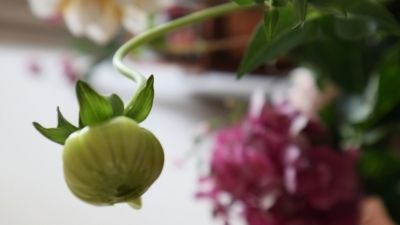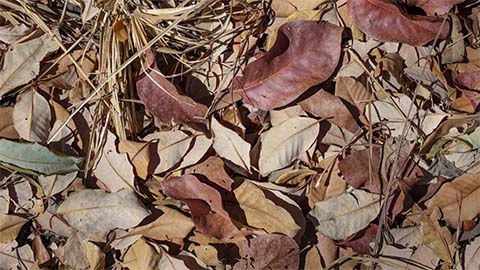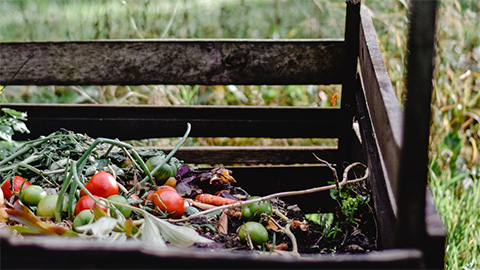Managing Vegetation Around Fruit Trees
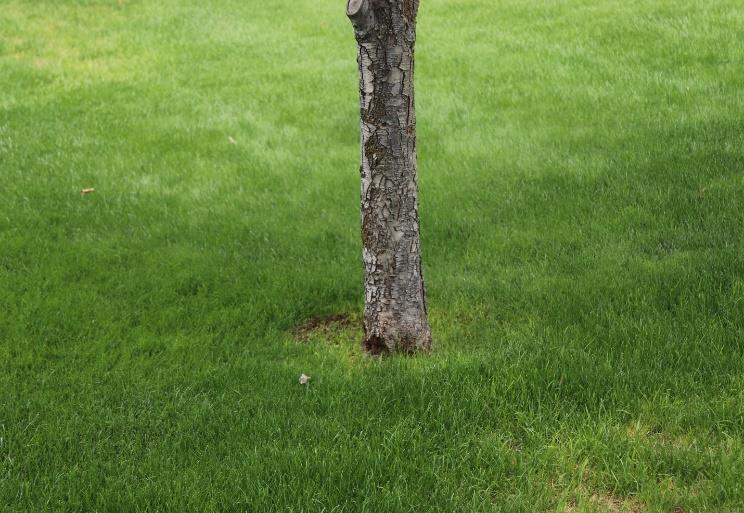
The turfgrass competes with the tree for water and nutrients,
and mowers and string trimmers can damage the trunk.
Fruit trees thrive along the Wasatch Front and in many other locations in Utah. Backyard fruit trees are very common in Utah, and producers quickly become attuned to insect and disease pests that can swiftly spoil substantial amounts of fruit. They are typically less aware of the detrimental effect of competing vegetation around fruit trees. This fact sheet describes the nature of vegetation competition and proposes management strategies to reduce or eliminate competition.
Weeds or grass growing immediately around tree trunks will compete with fruit trees for water, nutrients, and sometimes for sunlight (Figure 1). One experiment demonstrated that grass growing near apple tree trunks delayed the onset of fruiting and reduced vegetative growth compared to trees surrounded by an area that had been kept vegetation-free with mulch, cultivation, or herbicides. Also, grasses were more competitive than broadleaf weeds. In another experiment, adding more nitrogen did not overcome the competition imposed by grass.
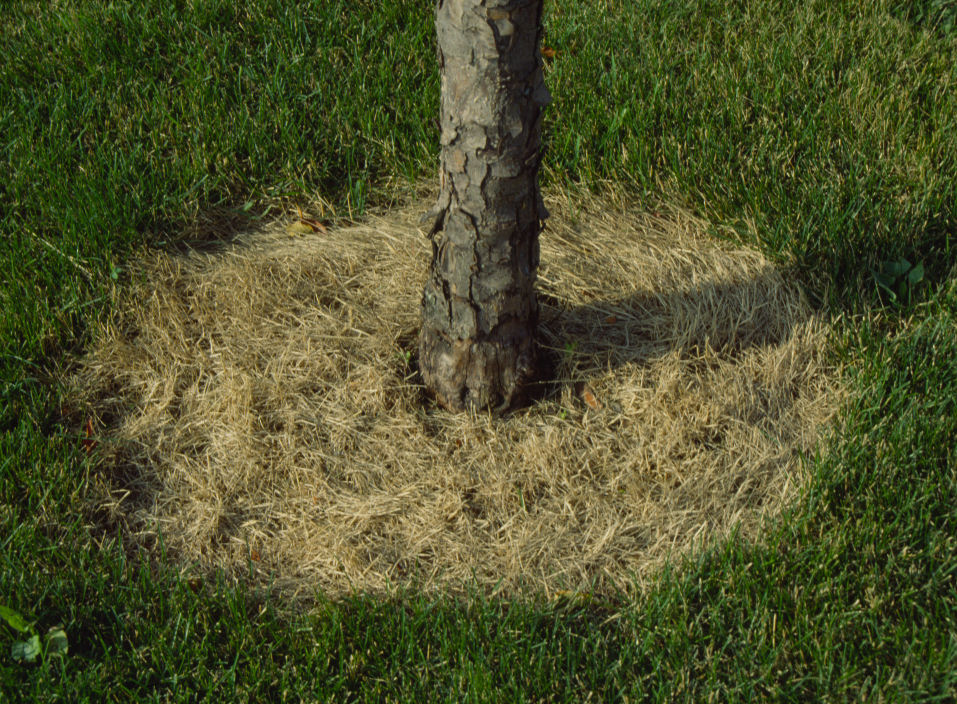
with a systemic non-residual herbicide.
Grass growing immediately adjacent to fruit tree trunks poses several disadvantages. Grasses are highly competitive and will deprive fruit trees of the water and nutrients they need to thrive. Grass root systems are finely divided and are very efficient at removing water and nutrients from soils. Leaving grasses un-mowed around trees creates rodent habitat. In the winter, if populations are high and other food sources are scarce, rodents will eat the bark from fruit trees, which will girdle and kill the trees. When using mowers and string trimmers on grass immediately adjacent to fruit tree trunks, the bark may be damaged. The risk of damage declines but is not eliminated as trees age and the bark becomes corky. Thus, we clearly see that grass and other vegetation growing around fruit tree trunks is not beneficial. The next logical questions are how to make the area around fruit trees vegetation-free and how to keep that area vegetation-free. A related question is how large a vegetation-free area should be.
Research done for both apples and tart cherries shows that a vegetation-free area of between 2 to 3 feet in radius is required to eliminate the competitive effects of grass. No additional benefits were derived from increasing the vegetation-free zone beyond a 2-to 3-foot radius.

trunk reduces competition from turfgrass.
In a backyard setting, vegetation can be removed or killed. To remove grass and other vegetation, carefully and shallowly dig it out with a shovel. This is a lot of work. Take care not to damage tree roots in the process. Alternatively, the area around the trunk of the tree can be treated with non-residual herbicides containing glyphosate (Roundup®). Protect the trunk with plastic kitchen wrap or aluminum foil before treatment. Once the spray has dried, remove the wrap. Treated vegetation will turn yellow and die within two weeks (Figure 2).
Once competing vegetation has been controlled, discourage the growth of new vegetation by applying a layer of organic mulch such as wood chips or shredded bark in donut fashion around the base of the tree (Figure 3). Don’t pile mulch up around the tree trunk. If mulch is piled around the trunks of fruit trees, particularly apples on dwarfing rootstocks, the scion portion of the tree above the rootstock may send out roots into the mulch and the dwarfing influence of the rootstock is lost. Mulch has the added benefit of retaining soil moisture. Refresh mulch every few years for the life of the tree.
Keeping vegetation away from tree trunks is not just for aesthetics. Relieving competition for water and nutrients from fruit trees allows them to be more productive. This is good horticulture.
Related USU Extension Publications
- Using Fruit Trees and Berries to Create an Edible Landscape in Utah
- Managing Suckers around Fruit Trees
- Training and Pruning Apple Trees
- Growing Pears in the Home Orchard
- Peaches in the Garden
Photo Credit
All images were provided by Teryl R. Roper.
Literature Referenced
- Al-Hinai, Y. K., & Roper, T. R. (2001). Temporal effects of weed control on tart cherry tree growth, yield and leaf nitrogen concentration. HortScience 36, 80–82.
- Merwin, I. A., & Ray, J. A. (1997). Spatial and temporal factors in weed interference with newly planted apple trees. HortScience, 32, 633–637.
- Shribbs, J. M., & Skroch, W. A. (1986). Influence of 12 ground cover systems on young ‘Smoothee Golden Delicious’ apple trees: I. growth. Journal of American Society for Horticultural Science, 111, 525–528.
Published November 2021
Utah State University Extension
Peer-reviewed fact sheet
Download PDF
Authors
Teryl R. Roper, Utah State University Extension Pomologist, Department of Plants, Soils, and Climate
Related Research



